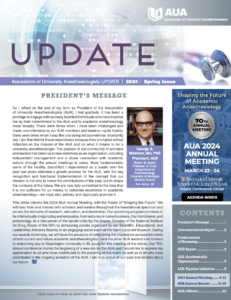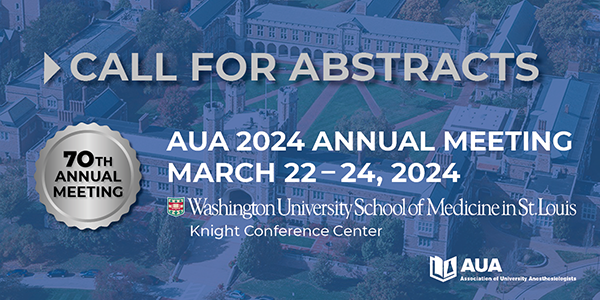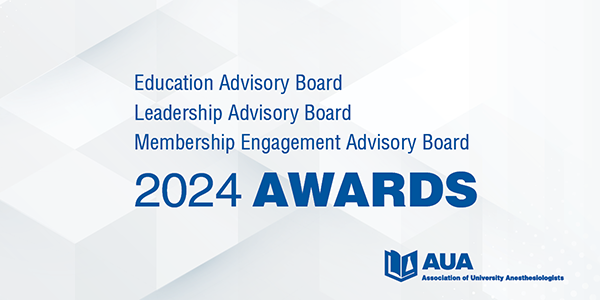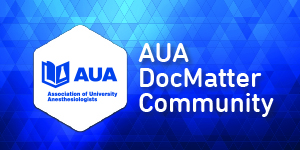Asking Questions and Searching for Answers: My Journey as an Aspiring Anesthesiologist-Scientist
“The art and science of asking questions is the source of all human knowledge.”
These words from the writer Thomas Berger (no relation to me) nicely capture my views on scientific research. Although we teach our residents at length about pharmacology, physiology, and other relevant topics, I believe the most important things to notice as an aspiring perioperative researcher are the things we do not yet know, and the things we do not yet understand, about the practice of anesthesiology.
For me, one major question stood out as I finished anesthesiology residency and a faculty fellow year at Duke: there were some older patients whose frontal EEG waveforms suggested that their brain was deeply anesthetized, even when they had received only tiny anesthetic doses (such as MAC-awake inhaled anesthetic doses). It was an open question why this happened and what it meant; nothing in the Anesthesiology textbooks I read as a resident could explain this phenomenon.
I then joined the Duke faculty in 2014 with this question in mind, and was fortunate to have many discussions about this and other related topics with Drs. Michael “Luke” James, Mark Newman, Joseph P. Mathew, and the late David S. Warner—then our vice chair for research. It seemed intuitively obvious to me that there must be something wrong with the brains of patients who showed deep EEG signatures at low anesthetic doses. To investigate this, we began to study the relationship between this brain EEG response pattern (to anesthetics) and postoperative delirium. Together with Dr. Stacie Deiner (then at Mount Sinai, now at Dartmouth), we found this pattern (of deeply suppressed EEG waveforms in response to small anesthetic doses) was independently associated with a ~4-fold increased risk of postoperative delirium among older adults.
This result was fascinating and supported our intuition that there must be something wrong with the brains of patients who showed this EEG response pattern to anesthetics. Yet, it left open the question of why some patients’ brains displayed this EEG response pattern. We are currently investigating this by asking the question: to what extent does preclinical/prodromal (ie not yet diagnosed) neurodegenerative or neurovascular disease pathology predispose patients to show this low brain anesthetic resistance pattern? We are grateful for an NIH R01 grant (AG073598) that started last year and which is funding our work in this area.
My team’s second research question focuses on how APOE4, the most common genetic risk factor for late onset Alzheimer’s disease (AD), damages the brain. We are testing the hypothesis that APOE4 damages the brain starting in young adulthood (earlier than previously thought) by activating complement. We started to study this topic during the first year of Covid19, when our prospective study enrollment was shut down, by analyzing publically available proteomic data from the Alzheimer’s Disease Neuroimaging Initiative (ADNI). In this ADNI data set, we surprisingly found that the APOE4 allele itself, independent of clinical diagnosis, was associated with lower CSF levels of CRP (a complement activator) and every complement cascade protein- a potential indicator that these proteins were being activated and degraded. We’ve been fortunate to obtain additional NIH funding (R01 AG076903) to study this topic, and to more definitively ask: do APOE4 carriers have increased complement activation throughout adult life, and does this predict future cognitive decline? And, would modulating APOE protein signaling during anesthesia/surgery block postoperative CSF complement activation and prevent postoperative delirium?
Five key things have helped facilitate this work. First, my department has generously provided 4 days per week of research time with only ~1 clinical day shift per week (plus standard night and weekend call) over the past 9 years; I have never been asked to work extra clinical shifts above this commitment. I am grateful to my neuroanesthesiology division chiefs (Drs. David L. McDonagh, Dhanesh Gupta, and now Nicole Guinn) and Drs. Newman and Mathew for this protected research time, which has allowed me to focus on asking (and trying to answer) the research questions mentioned above.
Second, the environment at Duke (both within the anesthesiology department and the entire medical center) has been highly supportive of young clinician-scientists. Soon after I joined the faculty, Duke held an all-day seminar to teach junior faculty how to obtain NIH K grants (ie career development awards), and has held numerous other grant writing seminars, mock grant review panels, and other sessions to help launch junior investigators’ research careers.
Third, I’ve been fortunate to have outstanding mentorship from Dr. Mathew (and Drs. Heather E. Whitson and Harvey J. Cohen from Duke Geriatrics). I’ve learned a great deal from all three of them: about how to do translational human subjects research, how to write, and how to lead teams and bring people together around common research questions.
Fourth, many of my anesthesiology colleagues have joined our research team and have helped do lumbar punctures on our study patients and other items for our studies, and our surgical colleagues (many of whom are also researchers) have been supportive of patients enrolling in our studies as well.
Fifth, I am grateful for the supportive community of young anesthesiologist-scientists that has formed over the last decade, in part through the early Stage Anesthesiology Scholars (eSAS) group that several of us started ~8 years ago. There aren’t a ton of anesthesiologists doing research (at least as compared to other specialties), so it was immensely helpful to talk with other junior anesthesiologist-scientists, especially during my first few years on faculty. I can only hope that the efforts of eSAS and organizations like FAER, IARS, AUA, the ASA, and others will similarly help advance the careers of current trainees who share the drive to ask and answer important questions at the center of anesthesiology practice—our ability to improve care for future patients, indeed the future of our field, depends on it.











